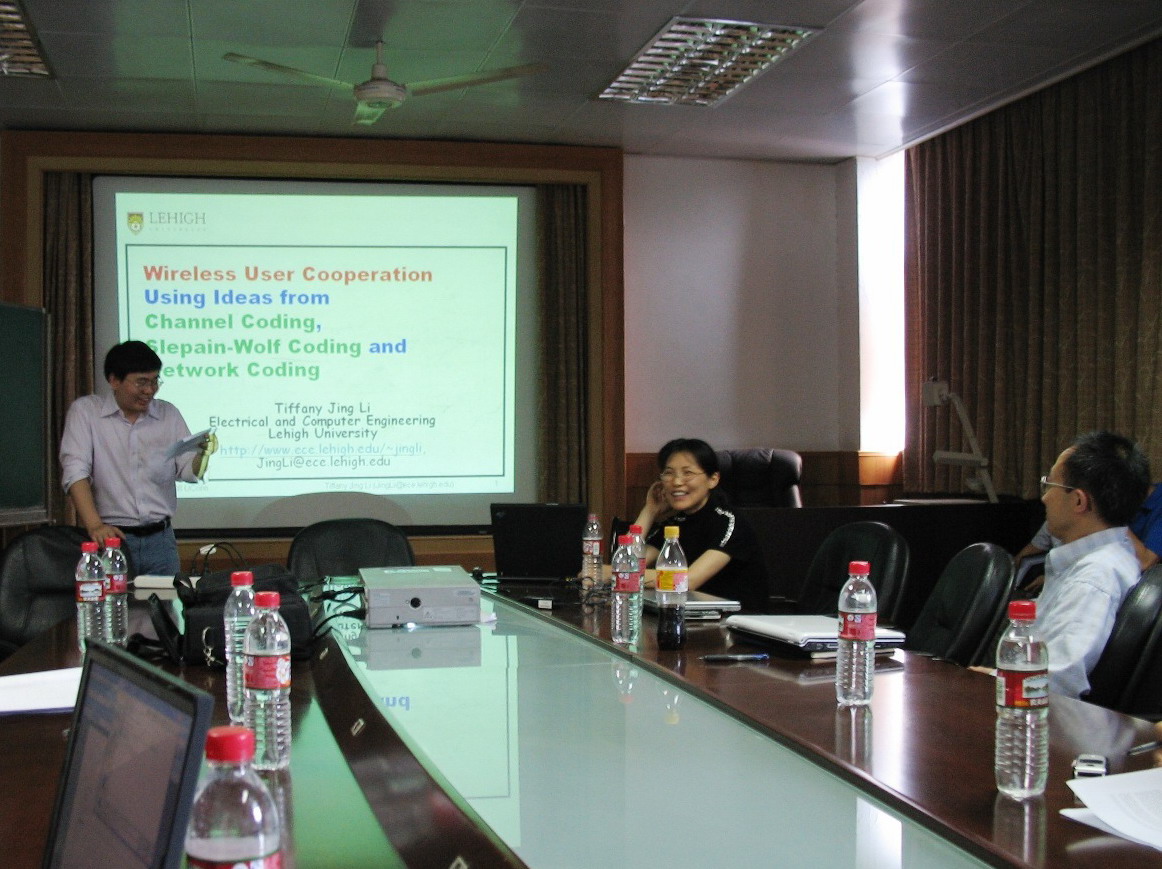近日,美国Lehigh大学电气与计算机工程系的Tiffany Jing Li教授来我所访问。6月3日下午,李教授在信电楼四楼学术厅为广大师生作了题为《Wireless User Cooperation Using Ideas from Channel Coding, Slepain-Wolf Coding and Network Coding》的学术报告。
李教授研究兴趣涉及信道编码、分布式信源编码、网络编码和无线网络的分布式算法与策略等领域。报告中,李教授主要介绍了她近年来如何将信道编码、分布式信源编码以及网络编码的思想与技术融合起来应用于合作通信的研究工作。我所张朝阳教授、黄爱苹教授、张宏纲教授等教师及研究生听取了学术报告,并与李教授进行了热烈的讨论。

附:报告摘要
Title: Wireless User Cooperation Using Ideas from Channel Coding, Slepain-Wolf Coding and Network Coding
Speaker: Prof. Tiffany Jing Li, Dept. of Electrical & Computer Engineering, Lehigh University, Bethlehem, PA, USA
Abstract: The information world is undergoing an exciting paradigm shift from point-to-point to network communication and from centralized to distributed architecture. While the new paradigm promises unprecedented communication capabilities, it imposes new challenges on the way we collect, disseminate, represent and process information. One example of network information processing is wireless user cooperation, where multiple wireless users share antennas to exploit cooperative diversity over (time-limited) fading channels and to extend the dynamic transmit range.
We present two innovations for wireless user cooperation using ideas from channel coding, Slepian-Wolf coding and network coding. The first is the development of "Slepian-Wolf (SW) Cooperation" -- the first practical compress-and-forward (CF) coding scheme in literature. We discuss a general framework which makes clever use of the (high) correlation between the (noisy) packet overheard by the relay and the original packet at the source, and which efficiently exploits SW coding techniques to combat inter-user outage. The second is the exploitation of adaptive network coded cooperation (ANCC) in wireless ad-hoc networks. The network coding literature uses the prevailing assumption of static or lossless networks, but real wireless networks comprising randomly-faded channels are inherently unstable and unreliable. By matching code-on-graph with network-on-graph in a distributed and real-time manner, we show that network coding for ad-hoc networks is not only feasible, but also highly beneficial. We further extend ANCC through a simple but powerful mechanism of integrative channel-and-network coding. In addition to remarkable performance gains, the generalized scheme provides a constructive example for the notion that channel coding (and source coding) must be unified with network coding (routing) in order to achieve end-to-end optimality.